Rice Pilaf
on Sep 30, 2022, Updated Jan 18, 2025
This post may contain affiliate links. Please read our disclosure policy.
Tender and full of flavor thanks to a quick sauté in a bit of oil and butter before the pilaf is simmered in a light broth.
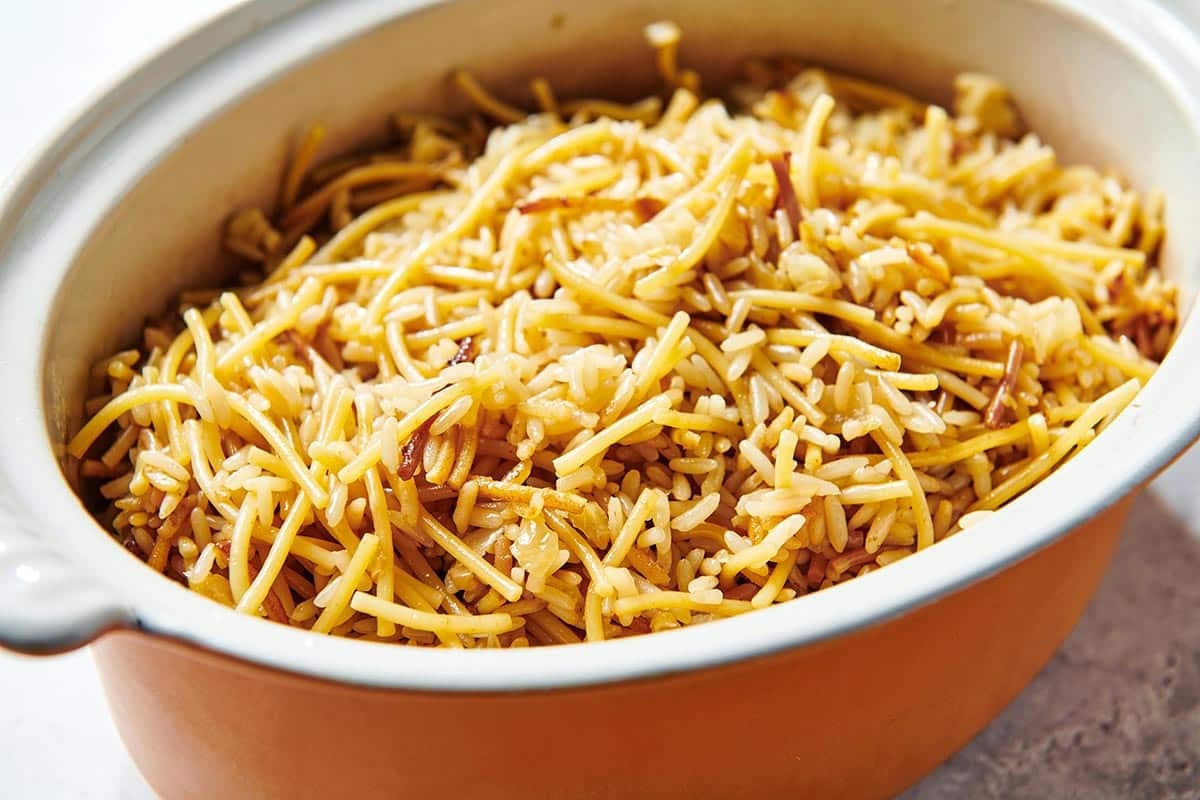
Rice pilaf is a rice and pasta dish that can be made with a variety of types of rice and pasta. The common denominator in all pilaf recipes is the step of cooking the rice and pasta in butter and/or oil before the liquid is added. In this recipe, pantry staple, long-grain white rice is mixed with little bits of broken spaghetti or other long skinny pasta (angel hair is another choice) and then cooked in broth or water. Chopped onion adds flavor.
A bed of rice pilaf is so great underneath all kinds of dishes from kebabs (try Indian-Inspired Lamb Kebabs, Moroccan Lamb Kebabs, or Mustard and Maple Pork Kebabs) to simply roasted foods (try Sheet Pan Salmon and Broccoli Rabe). Or try something saucier like Ratatouille. Anywhere you might serve rice, think about serving rice pilaf for even more flavor and texture.
Table of Contents
- Why Is Rice Pilaf So Good?
- What Is the Difference Between Rice and Rice Pilaf?
- Rice Pilaf Ingredients
- Make Ahead Rice Pilaf
- What Kind of Rice to Use in Easy Rice Pilaf
- Liquid to Rice Ratio for Rice Pilaf
- What Kind of Pasta to Use in Pilaf
- How to Make Rice Pilaf
- What to Serve With Rice Pilaf
- Rice Pilaf Recipe
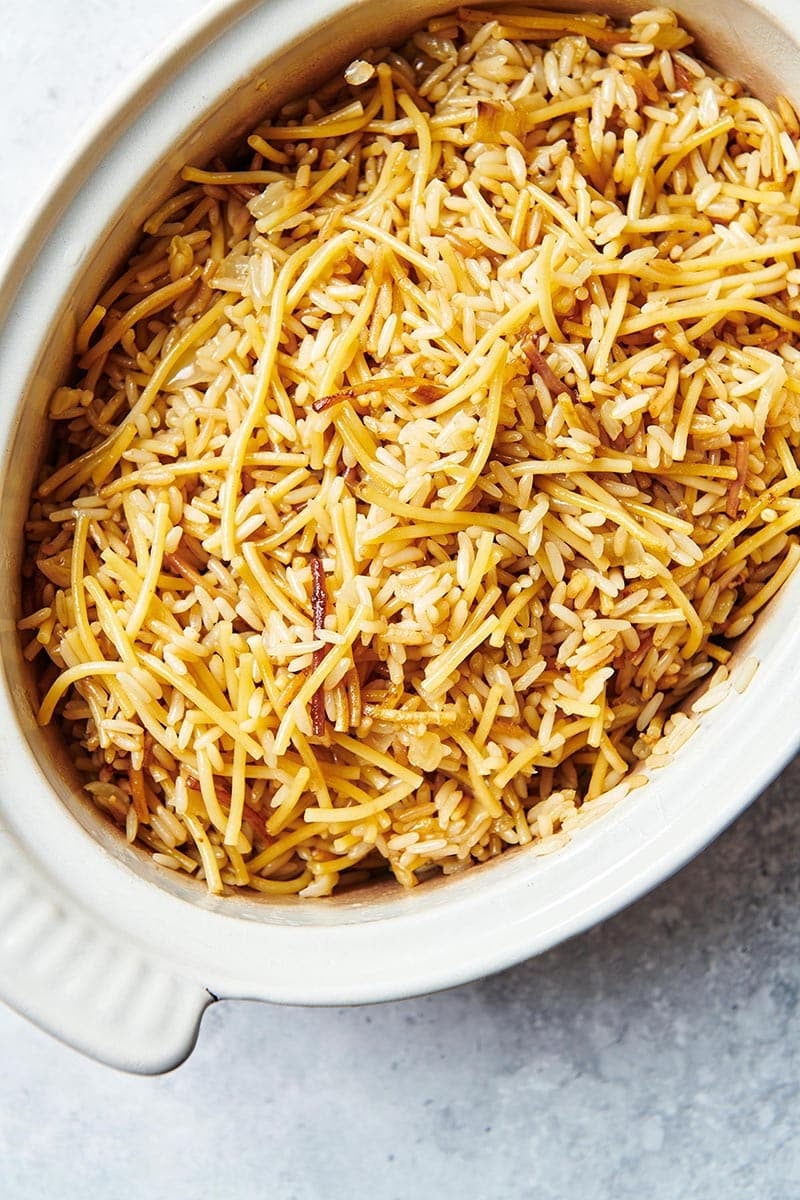
Rice Pilaf: Tender and full of flavor thanks to a quick saute in a bit of oil and butter before the pilaf is simmered in a light broth.
Rice pilaf is made in many versions all around the world. From Indian (Biryani), English (Pilau), Trinidad (Pelau), and South Asia (Pulao)…this dish appears in different guises in the Caribbean, the Balkans, Central and South Asia, Central Europe, Latin America, and on and on. Rice is one of the most popular and readily available foods in many cultures, and toasting the rice (or pasta) first in a little fat, and then cooking it in liquid is a very common method of preparation. It adds a surprising amount of flavor.
In various parts of the world other seasonings and ingredients are added, sometimes along with bits of meat and other vegetables. Paella is a glorified Spanish version of pilaf, made with rice meats and seafood, and vegetables.
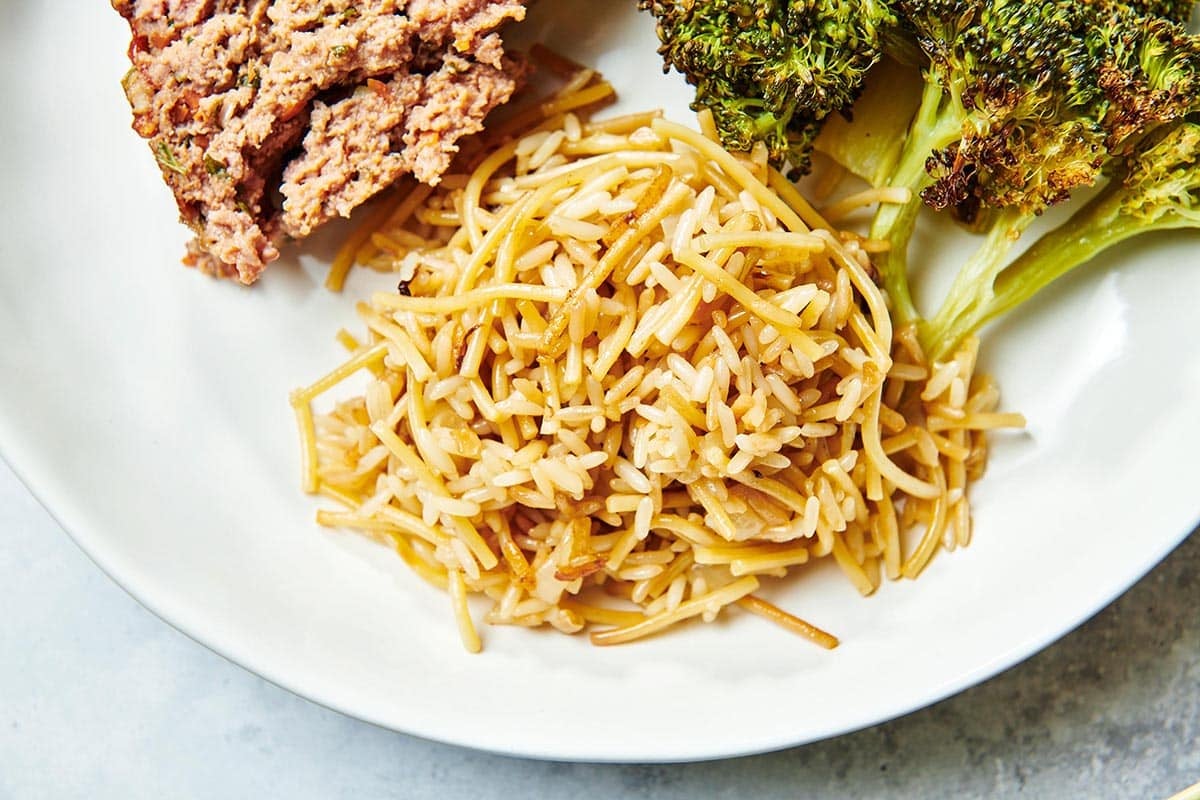
Why Is Rice Pilaf So Good?
If sauteed and cooked pasta is delicious, and sauteed and cooked rice is delicious, then the combination can only be more delicious. The rice and pasta are also cooked in a broth, which adds so much flavor to this dish. If you are looking for a more delicate pilaf, you can use water instead of broth, but most pilafs get much of their flavor from the broth. Or, use a combo of half broth and half water, which is what I often do when cooking grains. It’s kind of the best of both worlds.
What Is the Difference Between Rice and Rice Pilaf?
Plain rice is usually cooked in water and has a very mild flavor. Rice pilaf involves the rice being cooked in a bit of fat (a combo of butter and oil here) and some aromatics (in this case, onion), then the broth is added, and it cooks the rest of the way through, much like regular rice. There is a whole lot more flavor in pilaf, thanks to the sauteing of the rice (and the pasta) before it is combined with the liquid. Plus the liquid is usually broth, or diluted broth, which adds lots more flavor to the rice dish.
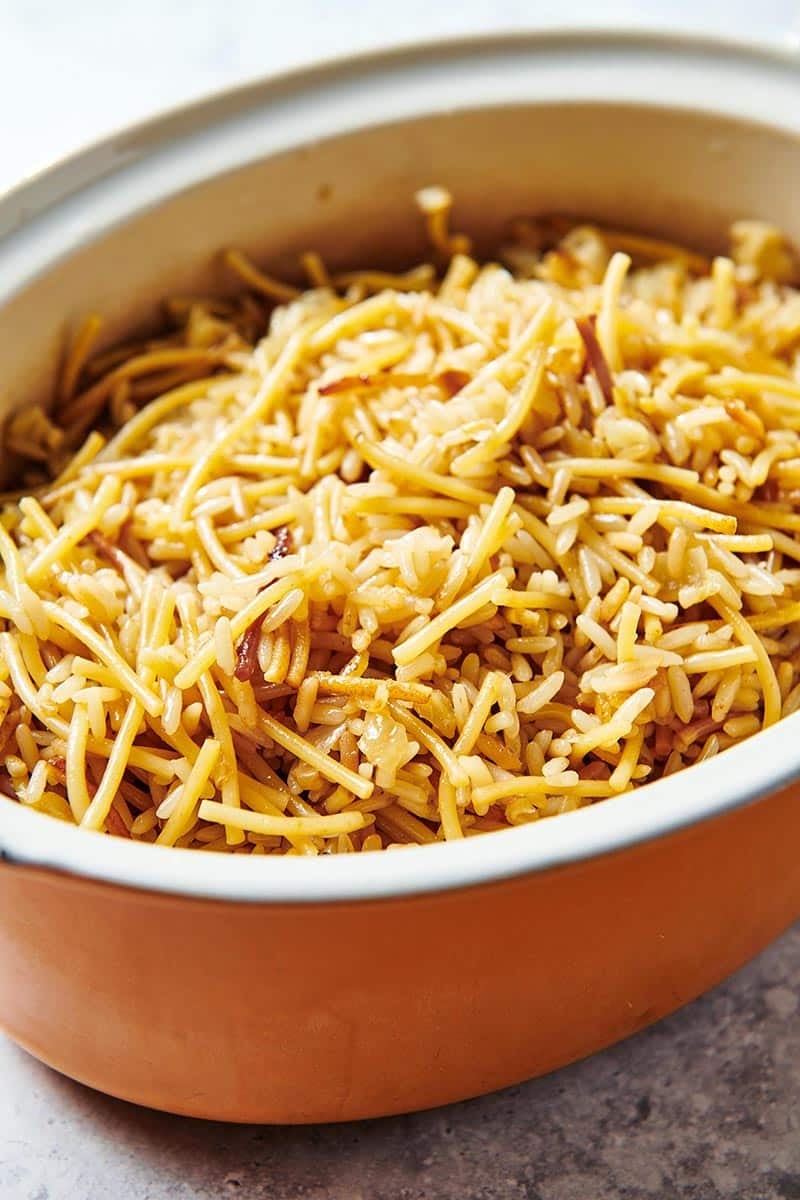
Rice Pilaf Ingredients
- Olive Oil – To sauté the onion and provide flavor.
- Butter – Same thing, different addition of flavor! You could use all oil or all butter if you prefer.
- Onion – Or other aromatics or members of the onion family like garlic, leeks, scallions, or shallots. Other chopped vegetables can also be added for flavor and color.
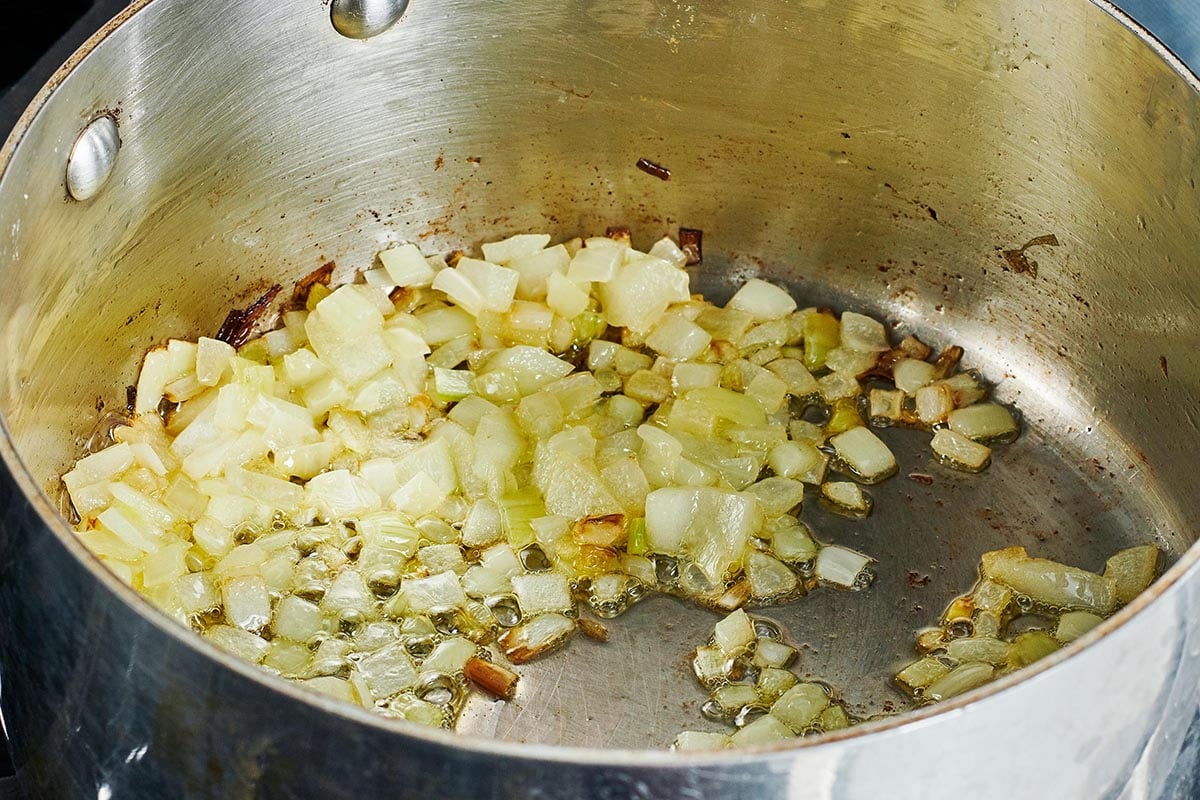
- Rice – Long-grain rice is the most common, but you can and should play around with different types (see chart below).
- Pasta – Optional, but it is a commonly added element, and gives the dish varying textures, and the noodles really soak up the broth providing even richer flavor.
- Broth – Use vegetable broth for a vegetarian pilaf, chicken if you are serving it with a chicken or meat dish. You can dilute the broth with water if you want a more delicately flavored pilaf.
Make Ahead Rice Pilaf
After you finish making the pilaf, let it sit, and fluff it with a fork. Then, spread out the hot pilaf on a rimmed baking sheet and allow it to cool. When cooked, transfer it to a container. Cooling it before storing it will allow the grains and pasta to stay al dente and distinct, and not become mushy. Reheat in the microwave or in a pot over low heat, stirring frequently (if in a pot, stir every 30 seconds or so, if in the microwave, stir after every 45-second burst of heating). You may need to add a couple of tablespoons of water or broth if the pilaf seems dry.
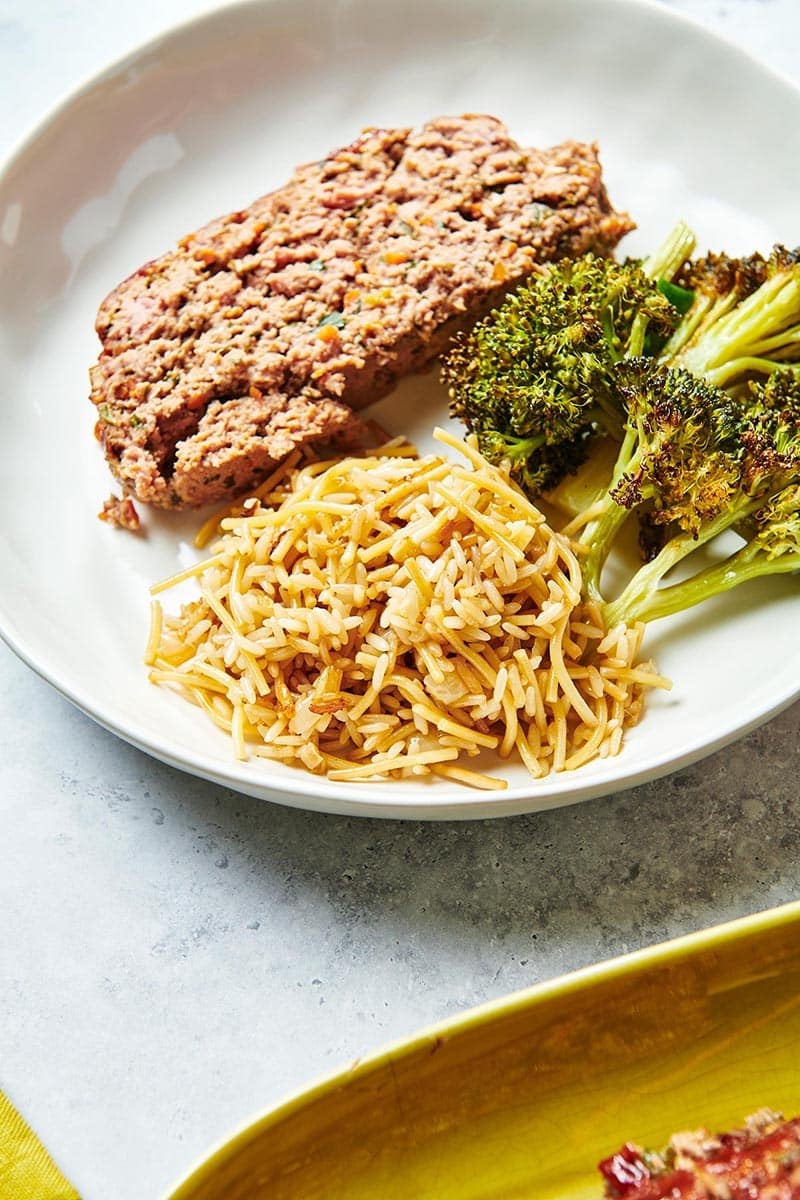
(See How to Reheat Rice in the Microwave – the same simple technique works here!)
What Kind of Rice to Use in Easy Rice Pilaf
You can use any number of rices in pilaf, just make sure you adjust the water to rice ratio accordingly. The recipe below calls for long-grain white rice, which most of us have on hand, but you can also play with other types of rice. Refer to this chart to see the cooking times for different rices! The amount of liquid called for assumes you are using 1/2 cup of pasta in addition to the cup of rice. Reduce the amount of liquid to 1 3/4 cups instead of 2 if you are skipping the pasta, and just making the pilaf with rice.
Liquid to Rice Ratio for Rice Pilaf
| Type of Rice | Amount of Rice | Amount of Broth or Water | Cooking / Resting Time |
|---|---|---|---|
| Long Grain White Rice (Short and Medium) | 1 cup | 2 cups | 18 min. / 10 min. |
| Grain White Rice | 1 cup | 2 cups | 15 min. / 5 min. |
| Basmati Rice | 1 cup | 2 cups | 15 min. / 5 min. |
| Jasmine Rice | 1 cup | 2 cups | 15 min. / 5 min. |
| Texmati Rice | 1 cup | 2 cups | 15 min. / 5 min. |
| Brown Rice | 1 cup | 2 cups | 40 min. / 15 min. |
What Kind of Pasta to Use in Pilaf
I like to use broken strands of long, thin pasta like angel hair or vermicelli, spaghetti, or thin spaghetti. Break your pasta into small (about 1 inch) pieces by placing them in a sealed zipper top bag and gently smacking the pasta with a rolling pin, meat pounder, or another sturdy kitchen tool (the bottom of a small pot also works great!). The pieces will be of varying sizes, but just gently pound away until the biggest pieces will still be able to blend into the rice and be scooped up with a fork. Orzo is another classic pasta choice.
How to Make Rice Pilaf
- In a large saucepan, melt the butter along with the oil over medium-high heat. Add the onion and cook for about 4 minutes until it softens and turns golden.
- Add the pasta and rice and cook, stirring frequently, for about 4 minutes until the pasta is a bit toasted, the rice is opaque, and everything smells toasty.
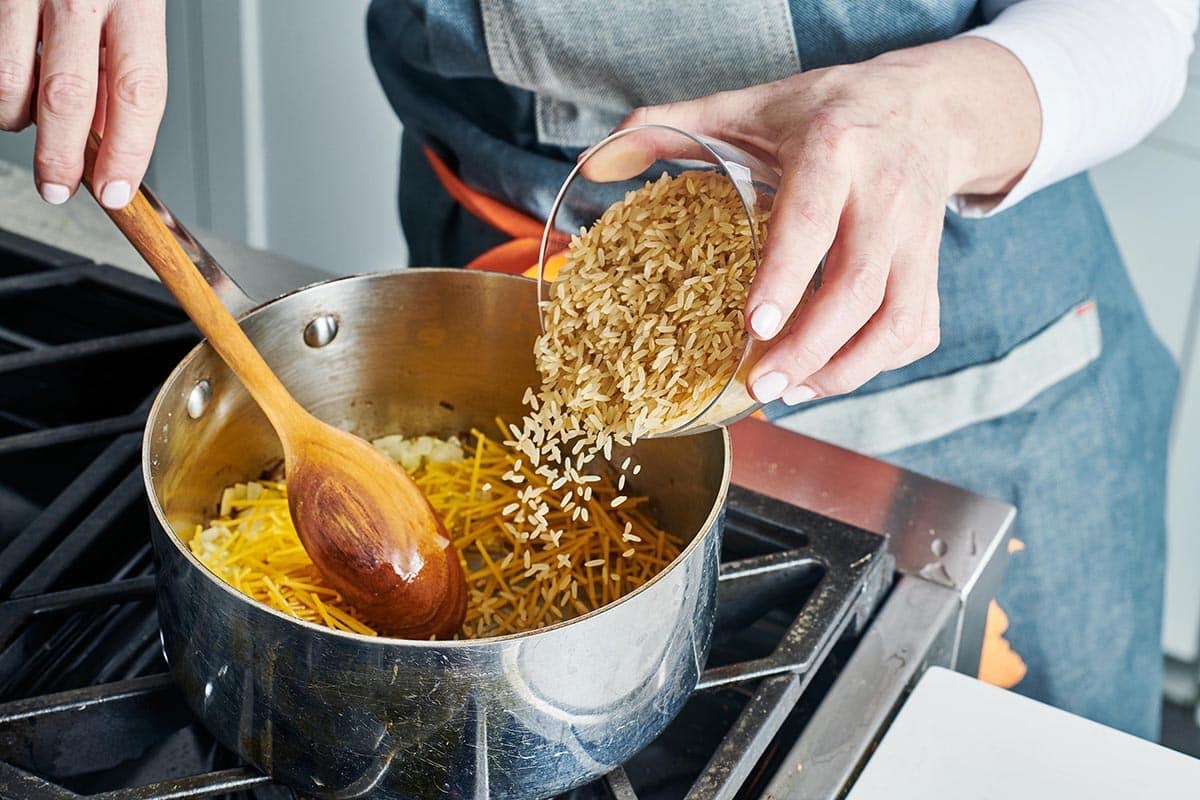
- Pour in the broth and 1/2 teaspoon salt, bring the mixture to a boil, then lower the heat to medium-low, cover the pan, and allow the mixture to simmer until just about all of the liquid has been absorbed and the rice and pasta are just barely cooked, about 15 to 17 minutes. Remove the pan from the heat and let sit, covered, for another 10 minutes.
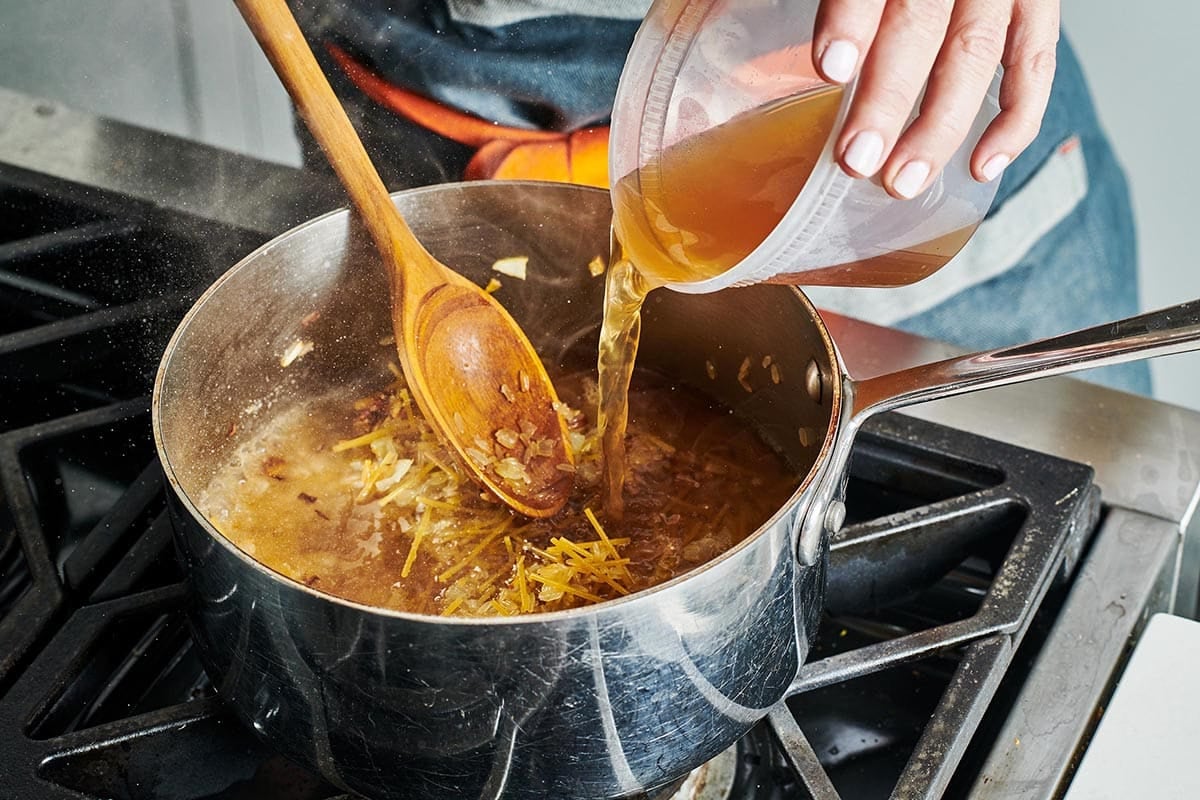
- Remove the lid and fluff the pilaf with a fork. Transfer to a serving bowl and serve hot.

What to Serve With Rice Pilaf
Pin this now to find it later
Pin It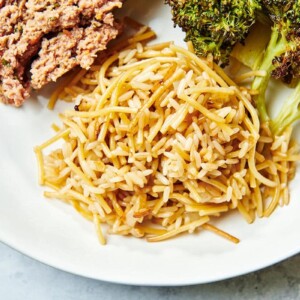
Rice Pilaf
Ingredients
- 2 tablespoons unsalted butter
- 1 tablespoon olive oil
- 1 cup chopped onion
- ½ cup 1-inch or so pieces of thin spaghetti (or vermicelli, or angel hair pasta)
- 1 cup long grain white rice
- 2 cups less-sodium chicken or vegetable stock
- ½ teaspoon kosher salt (or to taste)
Instructions
- In a large saucepan, melt the butter along with the oil over medium-high heat. Add the onion and cook for about 4 minutes until it softens and turns golden. Add the pasta and rice and cook, stirring frequently, for about 4 minutes until the pasta is a bit toasted, the rice is opaque, and everything smells toasty.
- Add the broth and 1/2 teaspoon salt, bring the mixture to a boil, then lower the heat to medium-low, cover the pan, and allow the mixture to simmer until just about all of the liquid has been absorbed and the rice and pasta are just barely cooked though, about 15 to 17 minutes. Remove the pan from the heat and let sit, covered, for another 10 minutes.
- Remove the lid and fluff the pilaf with a fork. Transfer to a serving bowl and serve hot.
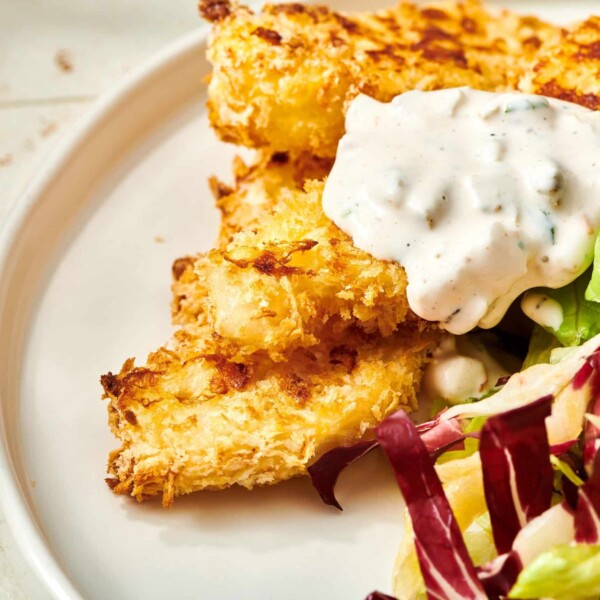
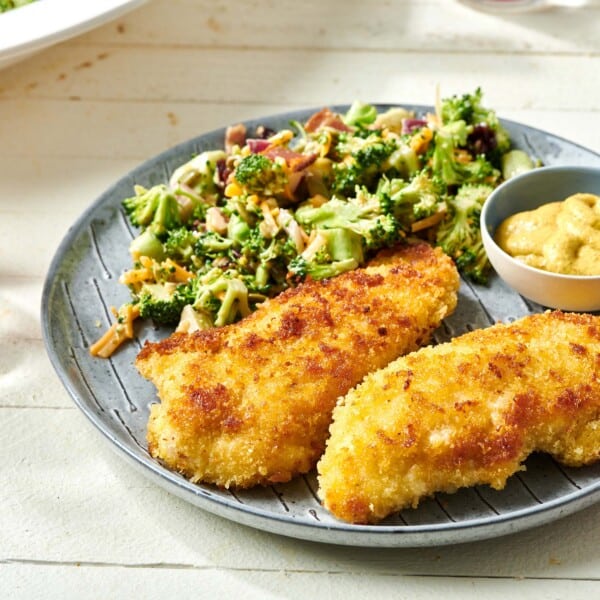
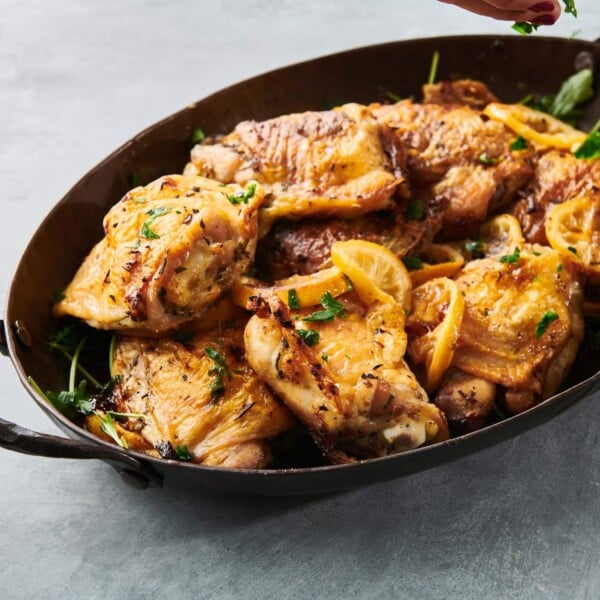
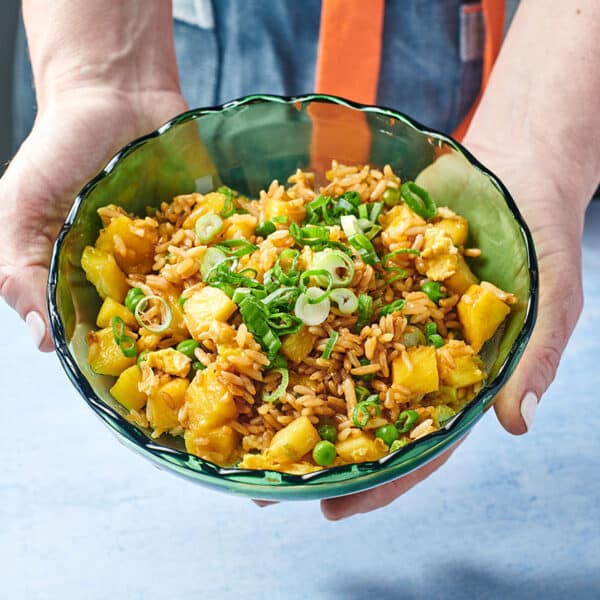
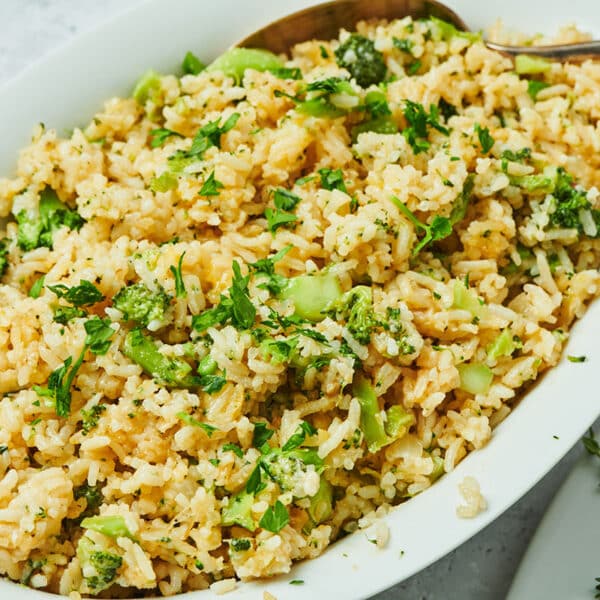
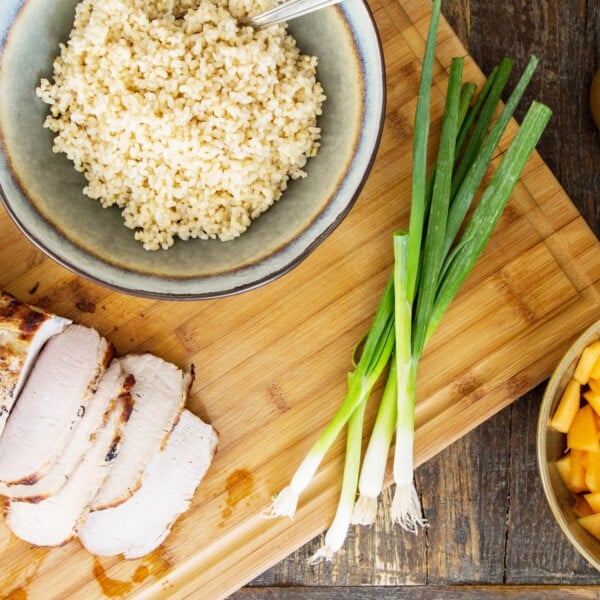
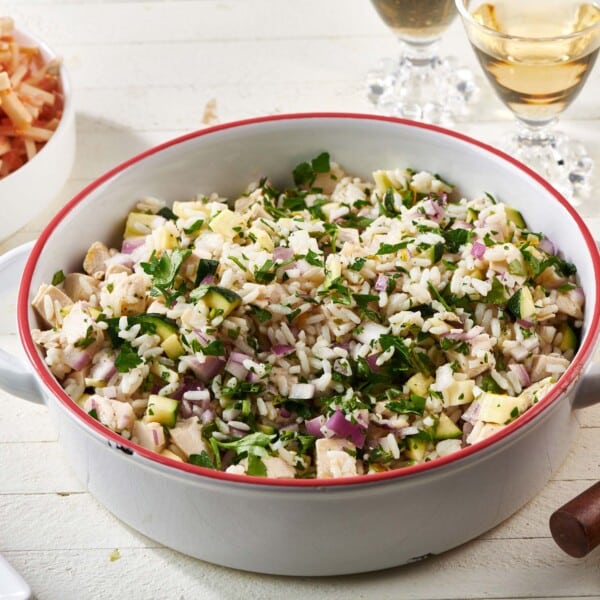









i make this side dish for EVERYTHING!
I like your recipes—I will subscribe